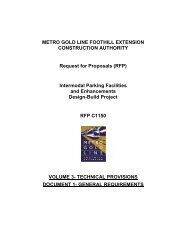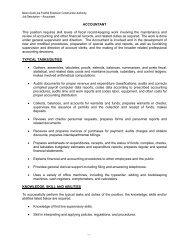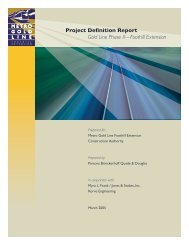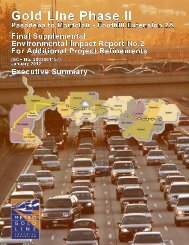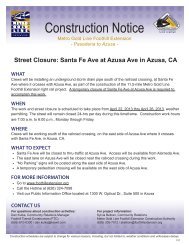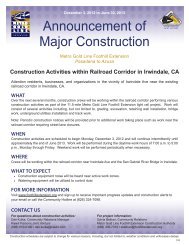Part 3 - Metro Gold Line Foothill Extension
Part 3 - Metro Gold Line Foothill Extension
Part 3 - Metro Gold Line Foothill Extension
Create successful ePaper yourself
Turn your PDF publications into a flip-book with our unique Google optimized e-Paper software.
Noise and Vibration Technical Report: <strong>Metro</strong> <strong>Gold</strong> <strong>Line</strong> <strong>Foothill</strong> <strong>Extension</strong>, Azusa to Montclair<br />
July 2012<br />
Page 90<br />
APPENDIX A. FUNDAMENTAL CONCEPTS OF NOISE AND VIBRATION<br />
Noise Fundamentals<br />
Sound is mechanical energy transmitted by pressure waves in a compressible medium such as air. Noise<br />
is generally defined as unwanted or excessive sound. Sound can vary in intensity by over one million<br />
times within the range of human hearing. Therefore, a logarithmic scale, known as the decibel scale (dB),<br />
is used to quantify sound intensity and compress the scale to a more convenient range.<br />
Sound is characterized by both its amplitude and frequency (or pitch). The human ear does not hear all<br />
frequencies equally. In particular, the ear deemphasizes low and very high frequencies. To better<br />
approximate the sensitivity of human hearing, the A-weighted decibel scale has been developed. Aweighted<br />
decibels are abbreviated as “dBA.” On this scale, the human range of hearing extends from<br />
approximately 3 dBA to around 140 dBA. As a point of reference, Figure 32 includes examples of Aweighted<br />
sound levels from common indoor and outdoor sounds.<br />
Figure 32: Typical Indoor and Outdoor Noise Levels<br />
Using the decibel scale, sound levels from two or more sources cannot be directly added together to<br />
determine the overall sound level. Rather, the combination of two sounds at the same level yields an<br />
increase of 3 dB. The smallest recognizable change in sound level is approximately 1 dB. A 3-dB increase<br />
in the A-Weighted sound level is generally considered perceptible, whereas a 5-dB increase is readily<br />
perceptible. A 10-dB increase is judged by most people as an approximate doubling of the perceived<br />
loudness.




